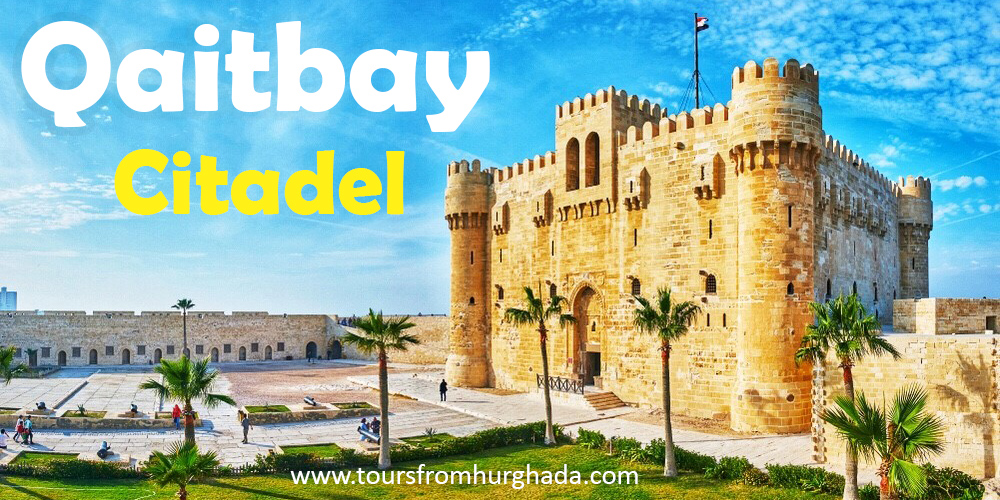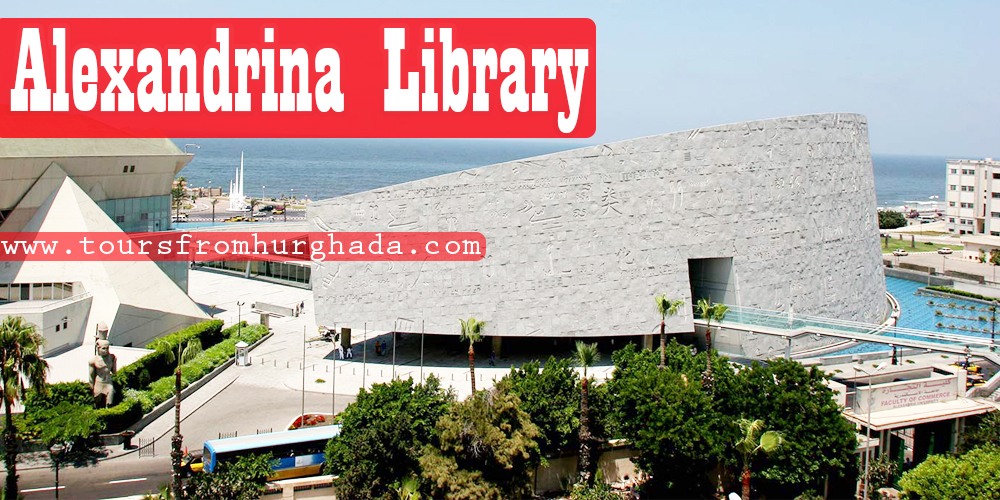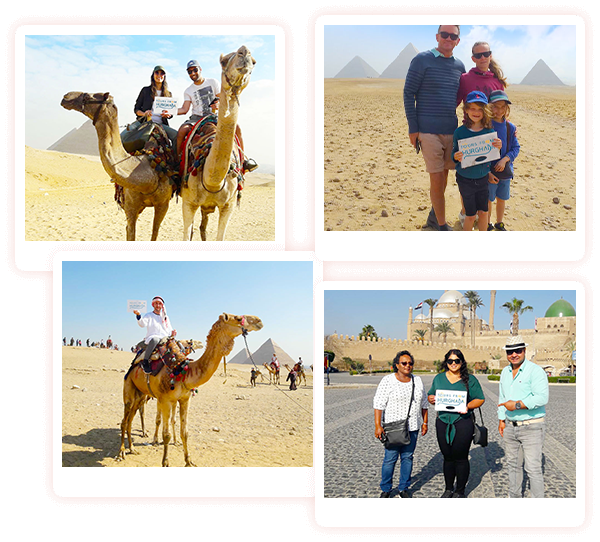The city of Alexandria has always enjoyed the spotlight due to its unique nature of containing many Greco-roman monuments despite being an Egyptian nation but one of these monuments is quite different known as the Alexandria catacombs as It beautifully able to mix the decorative artistic elements of the Hellenistic, Roman influences and ancient Egyptian pharaonic design in the most elegant and creative manner and for that reason it was gained the title of being one of the seven wonders of the Middle Ages.
Alexandria Catacombs History
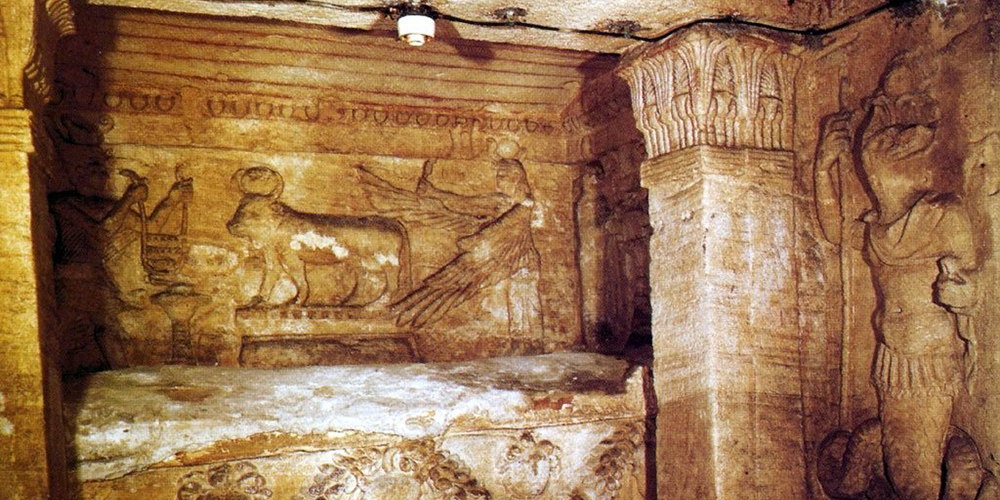
The catacombs are simply a necropolis located on the western part of Alexandria and date back to the 2nd century AD that it acted as a burial site and contained to be in common use until the 4th century AD. Alexandria Catacombs was discovered in 1900 AD by chance when a donkey-drawn cart fell into a pit that led to the rediscovery of this incredible monument of three sarcophagi along with a mass grave of other human and animal remains that was added later on such as the popular Hall of Caracalla which holds the bones of Emperor Caracalla in 215 AD. They gained the name "Kom El Shoqafa" which means Mounds of Shards because the area was filled with a mound of shards consisting of jars and objects made of clay.
The Architecture of Alexandria Catacombs
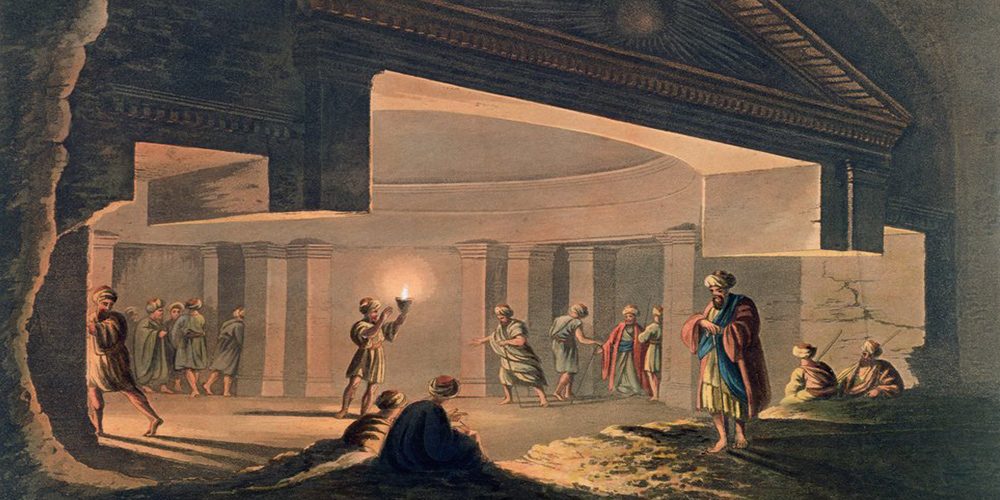
It consists of three levels craved through solid rock while the third level is completely underwater; all the levels are connected by a spiral staircase around a cylindrical hole.
Alexandria catacombs hold a six-pillared central shaft that opens off the entrance hall. The first floor holds a triclinium (roman dining room). The lobby of the construction lies in the second level where there are two pillars topped by papyrus, lotus and acanthus leaves of ancient Egypt and two falcons flanking a winged sun.
Alexandria Catacombs Design
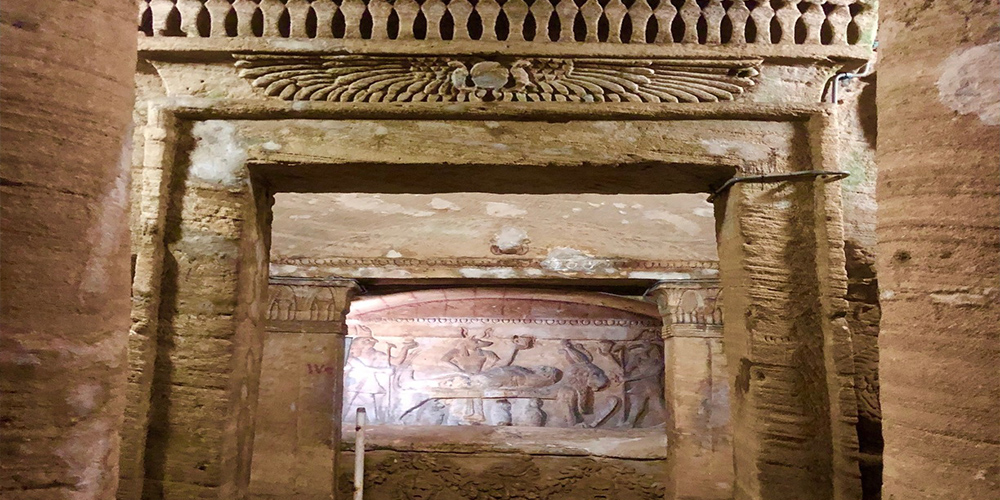
Alexandria Catacombs' main burial site contains the sarcophagus that is decorated with the images of the head of" Medusa" and the shield of the Goddess Athena. It holds figures of a man in a typical Egyptian pose while his head is carved in a classical Hellenes manner and a woman with a Roman hairstyle.
There is also various images of Egyptian gods like a mummy containing a big scepter with the god Anubis ( god of the dead), the emperor offering the feather of Maat( goddess of justice and balance) to the god Ptah ( god of craftsmen) , a scene of the Goddess Isis (goddess of motherhood) stretching her wings.
There is also the mention of the god wearing a double crown and holds a specter and a jar in each hand and the god Horus (sky god, the protector of Egypt) is featured on the walls wearing the double crown of upper and lower Egypt next to many Greek and Roman symbols.


